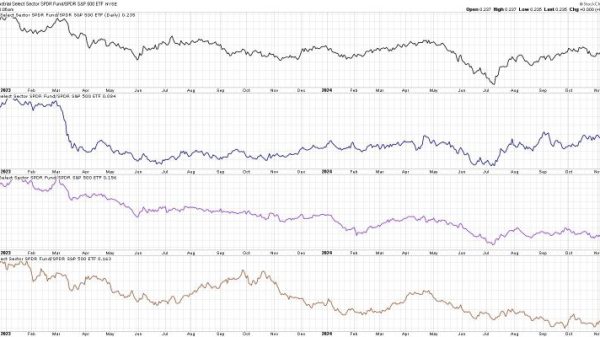Real quick — what did you have for lunch yesterday? Were you with anyone? Where were you? Can you picture the scene? The ability to remember things that happened to you in the past, especially to go back and recall little incidental details, is a hallmark of what psychologists call episodic memory — and new research indicates that it’s an ability humans may share with birds called Eurasian jays.
With episodic memory, “you’re remembering an event or an episode, hence the name,” said James Davies, first author of the study that appeared May 15 in the journal PLOS One. “You kind of mentally relive it. It also involves other kinds of details that make up that experience, so sounds, sights, even your thoughts or your mood at the time.”
Episodic memory differs from semantic memory, which is the recall of factual information, added Davies, a doctoral student in psychology at the University of Cambridge’s Comparative Cognition Lab.
“It’s often helpful to think about episodic memory as remembering, whereas semantic memory is just knowing,” he said. “There’s not really a conscious recall involved.”
While episodic memory is integral to how most people experience the world, it can be difficult for scientists to prove whether nonhuman animals share this ability — after all, they can’t tell us what they’re thinking. However, for several decades, scientists have been devising experiments to delve into animals’ ability to remember previous events, and they have found evidence of episodic-like memory in creatures as varied as pigeons, dogs and cuttlefish.
Corvids — the group of birds that includes crows, ravens and jays — are famously smart, and previous studies have suggested that they are capable of episodic-like memory, which may help them find bits of food that they’ve hidden for later. In 1998, Dr. Nicola Clayton devised an experiment with scrub jays in which the birds appeared to remember what kinds of foods they’d hidden in different spots and how long ago.
This means of finding evidence of episodic-like recall — called a “what, when, where” protocol — has become standard among scientists studying animal memory. But Davies, who is Clayton’s advisee, wanted to find other ways to test for this cognitive capability.
“If you’re only using one methodology, then potentially there’s some error in that method,” Davies said. “If you use multiple different methodologies that test the same thing in quite different ways, then that leads to much more conclusive evidence.”
The researchers devised a fresh approach involving Eurasian jays, and what they found could have implications for the study of human memory.
Testing incidental memory
Davies and Clayton’s new experimental design drew upon the concept of incidental memory.
“The idea is that with human episodic memory, we remember details of events that, at the time, weren’t necessarily relevant to anything. We weren’t actively trying to remember this,” Davies said. “But then if you were to be asked about it a few days later, you might remember those details.”
It’s a seemingly unimportant bit of information that you didn’t consciously commit to memory — for instance, remembering what you had for lunch yesterday. This aspect of episodic memory is sometimes referred to as “mental time travel.”
To find out whether Eurasian jays are capable of mental time travel, the researchers worked with birds that had been trained to find food hidden under cups. Davies set out a row of four identical red plastic cups and allowed the birds to observe him putting a piece of food under one of the cups. The jays then had to recall which cup the food had been hidden under. Easy enough.
For the next step of the experiment, Davies made little changes to the cups’ appearances, such as adding stickers or colorful strings, but once again hid the food under the same cup in the lineup. For a bird looking for a treat, those strings and stickers were seemingly unimportant incidental info — at this point, they only needed to worry about the position of the cup to find the food.
But in the final stage of the experiment, those little details of cup decoration became unexpectedly important. Davies changed the position of the cups so that the birds could no longer rely on the once-crucial information of which cup in the row contained food. (The treats had since been removed from the cups, to rule out the possibility that the birds were just finding the food by scent.) However, after a 10-minute break, the jays were still able to find the cups with the treats.
Davies suggested that the birds’ mental process might have involved asking themselves, “‘Where’s the food? I remember going to the one with the black square on it. I’ll go to that one,’” Davies said. The jays appeared to be going back in their memories to retrieve details about the cup decorations, and they were highly successful in using that information to find the hidden food.
“This study provides strong evidence for episodic memory in Eurasian jays,” said Dr. Jonathon Crystal, a provost professor of psychological and brain sciences at the University of Indiana Bloomington who was not involved with the project. “If you can answer that unexpected question after incidental encoding, that becomes a strong argument that you can remember back in time to the earlier episode, which is at the heart of documenting episodic memory.”
Crystal said that studies such as this one, which aim to identify animals’ abilities to form episodic memories, are important in part because of their potential role in the field of human memory research.
“The big disease of memory is Alzheimer’s disease, and of course, the most debilitating aspect of Alzheimer’s disease is a profound loss of episodic memory,” Crystal said.
Since Alzheimer’s drugs for humans invariably undergo animal testing before they reach human trials, he noted that it’s important for scientists to be able to drill down into whether these drugs actually affect the kind of memories that Alzheimer’s patients lose.
“It’s not enough to just improve memory, we need to improve episodic memory,” he said, and a better understanding of how to test for episodic-like memory in animals could help make that possible.
Kate Golembiewski is a freelance science writer based in Chicago who geeks out about zoology, thermodynamics and death.






























